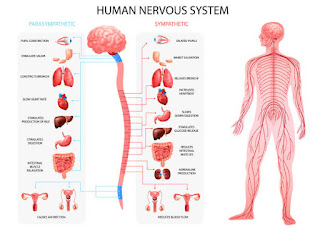Yoga for Cognitive Resilience: How Asanas Stimulate Brain Plasticity
Yoga for Cognitive Resilience: How Asanas Boost Brain Plasticity and Improve Focus
Yoga is often celebrated for its physical benefits—flexibility, strength, and endurance—but the true depth of its influence reaches much further, into the brain itself. Far beyond a simple mind-body exercise, yoga has been shown to foster cognitive resilience, boosting brain plasticity and creating new neural pathways. For centuries, the subtle wisdom behind yoga has been that a balanced body fosters a balanced mind. Today, this ancient practice is recognized as a powerful tool to not only help individuals manage stress but also to improve brain function and stimulate cognitive development, helping the brain stay adaptable, sharp, and resilient across all stages of life.
At its core, brain plasticity—also known as neuroplasticity—refers to the brain’s ability to reorganize itself by forming new connections between neurons. This process is vital not just for learning but also for recovery from mental fatigue, injury, and age-related cognitive decline. Scientific research now shows that yoga, through a combination of breath, movement, and mindfulness, can be a potent practice for stimulating this plasticity and building cognitive resilience.
The Brain-Blood Connection: How Asanas Fuel Cognitive Growth
In many ways, yoga starts with the breath, the gateway between the body and mind. Breathing deeply during yoga allows for greater oxygen intake, which in turn improves blood circulation throughout the body, including to the brain. Increased blood flow to the brain is a critical factor in maintaining and boosting cognitive function. The brain depends on a rich supply of oxygenated blood to keep it functioning at optimal levels, and certain yoga postures—especially inversions and forward folds—can help promote this circulation.
Inversions like Sarvangasana (Shoulder Stand) and Adho Mukha Svanasana (Downward Dog) help gravity assist the blood flow toward the brain, improving oxygen delivery to this critical organ. These postures stimulate the brain’s prefrontal cortex, which is responsible for higher-level cognitive functions like decision-making, planning, and problem-solving. Engaging in inversions regularly can help maintain the health of the brain by boosting neurogenesis—the process of generating new neurons—which is essential for memory formation and learning.
Balance poses, such as Vrksasana (Tree Pose) and Garudasana (Eagle Pose), further enhance this connection by improving focus and concentration. Holding these poses requires the brain to engage in proprioception—the body’s ability to sense its position in space—thereby improving neural pathways related to coordination and cognitive control. With the body and mind both focused on maintaining equilibrium, the brain builds new connections that support both motor control and mental clarity.
How Yoga Encourages Neurogenesis
A fascinating aspect of yoga is its ability to directly stimulate neurogenesis. Research suggests that stress can inhibit the production of new neurons, particularly in the hippocampus, which plays a vital role in memory and learning. Chronic stress is often a major factor in cognitive decline, impairing the brain’s ability to form and maintain neural pathways. Yoga, by reducing stress through mindful movement and breath control, counters this damage.
Asanas combined with pranayama (breathing techniques) reduce cortisol levels, the stress hormone that wreaks havoc on the brain when elevated over long periods. With consistent practice, yoga allows the nervous system to shift from a fight-or-flight response to a more restful and restorative state, which is conducive to neurogenesis.
One study published in Frontiers in Human Neuroscience found that participants who practiced yoga regularly showed increased gray matter volume in areas of the brain associated with attention, self-awareness, and sensory processing. This suggests that yoga does more than just improve mood or decrease anxiety; it literally rewires the brain for better cognitive function.
In poses like Sukhasana (Easy Pose) combined with alternate nostril breathing (Nadi Shodhana), practitioners can stimulate neurogenesis by activating the parasympathetic nervous system. The controlled, mindful breaths promote relaxation, allowing the brain to conserve energy for growth rather than stress response. As these breathing practices slow the mind and heart rate, they create the optimal environment for the brain to engage in deep learning and recovery.
Balance and Inversions: Supporting Cognitive Resilience
Balance poses and inversions are often referred to as “brain-strengthening” asanas because of their profound effect on cognitive resilience. Maintaining balance requires complete mental engagement, forcing the brain to strengthen its ability to focus and remain steady. These poses aren’t just physical challenges; they train the brain to work in harmony with the body to find stability amid movement.
When you practice poses like Ardha Chandrasana (Half Moon Pose) or Natarajasana (Dancer Pose), you are stimulating neural pathways associated with spatial awareness and proprioception. This enhances the brain’s ability to adapt to new stimuli, a process critical to cognitive resilience. By forcing the brain to constantly adjust and recalibrate in real-time, balance poses strengthen mental agility. Over time, these skills transfer off the mat and into everyday life, allowing practitioners to stay mentally sharp and adaptable, even under pressure.
Inversions, on the other hand, have the dual benefit of increasing blood flow to the brain while also promoting balance and coordination. Headstand (Sirsasana), for example, challenges the brain to coordinate multiple sensory inputs—balance, sight, and breath control—while reversing the body’s typical orientation. This process helps develop neuroplasticity by forming new connections between neurons that enhance cognitive control and executive function.
Mindful Movement: The Key to Sustained Focus
Mindful movement is an essential component of yoga, often overlooked in the rush to achieve perfect postures. Yet, this is where much of yoga’s brain-boosting power lies. Moving slowly and deliberately from one pose to the next while focusing on breath trains the brain to stay in the present moment. This practice, commonly known as “flow,” increases the brain’s capacity for sustained attention and focus.
Vinyasa flow, which links movement with breath, is especially effective for improving cognitive flexibility—the ability to switch between different tasks or thoughts. In yoga, the smooth transition from one asana to the next mimics the cognitive processes involved in shifting focus or adapting to new information. This flow also activates the brain’s default mode network (DMN), which is responsible for self-referential thinking and problem-solving. Regularly practicing mindful movement helps build cognitive resilience by improving the brain’s ability to transition smoothly between focused states and reflective thinking.
Mindful movement also reduces mental fatigue by giving the brain a chance to reset and rejuvenate between periods of intense concentration. Whether through a slow Hatha sequence or a more dynamic Vinyasa flow, the integration of breath and movement provides the brain with a much-needed break from cognitive overload, allowing it to recover and build resilience against future challenges.
Cognitive Resilience Across the Lifespan
Yoga’s impact on brain plasticity isn’t just for the young. One of the most powerful aspects of yoga is its ability to promote cognitive resilience across all stages of life. During periods of learning, whether it’s a student preparing for exams or an adult taking on a new skill, yoga enhances focus, memory, and problem-solving abilities by encouraging neurogenesis and improved brain connectivity.
For older adults, yoga plays an even more crucial role. As we age, the brain naturally loses some of its plasticity, leading to slower processing and memory decline. However, yoga has been shown to reverse some of these effects by increasing brain volume and enhancing the brain’s ability to adapt. Research indicates that older adults who practice yoga regularly have better cognitive function, particularly in memory retention, spatial navigation, and decision-making abilities. By promoting balance, focus, and relaxation, yoga keeps the brain sharp and adaptable well into the later years of life.
Recovery from Mental Fatigue
Periods of intense mental strain—whether due to work, study, or life stressors—can leave the brain feeling exhausted, unfocused, and sluggish. Cognitive resilience is crucial during these times, allowing the brain to recover and bounce back from fatigue.
Yoga provides a recovery mechanism by slowing down mental activity and activating the body’s parasympathetic nervous system. Simple poses like Balasana (Child’s Pose) or Savasana (Corpse Pose) help reduce the brain’s cognitive load, allowing it to enter a state of rest and recovery. Paired with mindfulness practices, these poses enhance the brain’s ability to recover from mental strain by reducing cortisol levels and promoting the growth of new neural pathways. The result is a more resilient brain, better equipped to handle future challenges with clarity and focus.
Conclusion
Yoga offers far more than physical flexibility—it creates mental adaptability and cognitive resilience that serves us throughout life. Through mindful movement, balance poses, and inversions, yoga boosts brain plasticity by increasing blood flow, improving focus, and reducing stress. These effects not only enhance cognitive function but also protect against mental fatigue and age-related decline. As we continue to explore the connection between yoga and brain health, one thing becomes clear: the practice of yoga is a powerful tool for cultivating a resilient, adaptable mind, no matter your age or stage of life.









